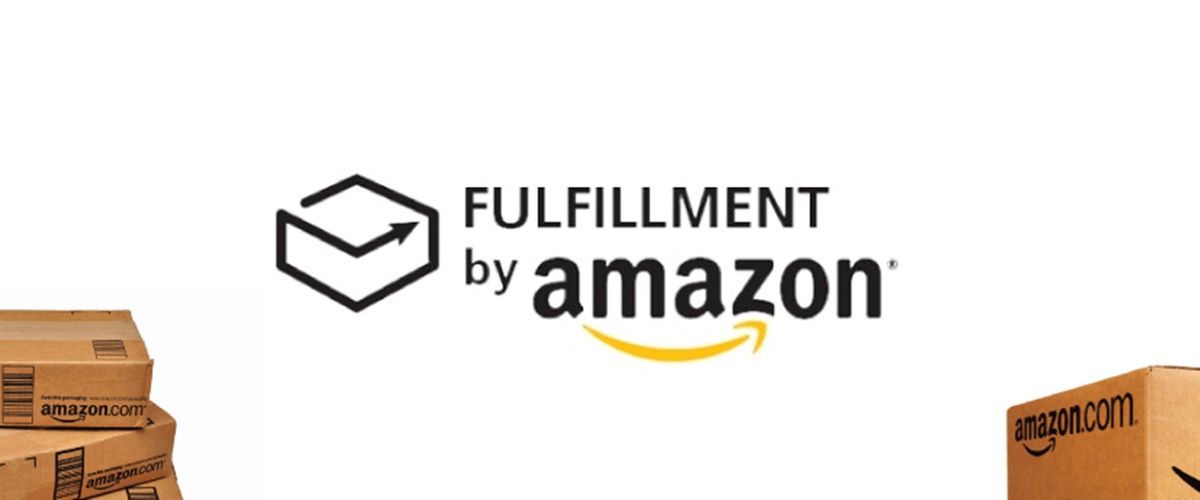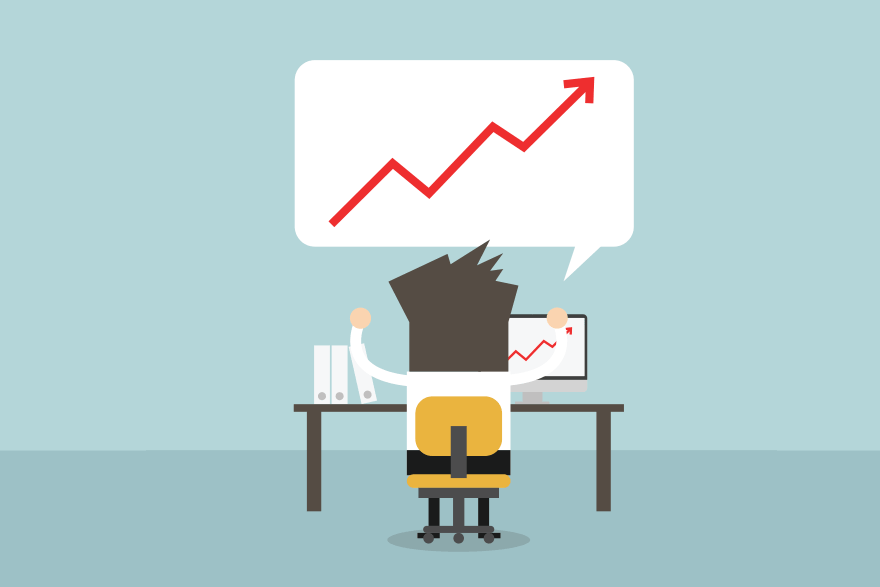How Much Does It Cost to Sell on Amazon? Breaking It Down For Beginners
It seems to be easy to enter the Amazon marketplace. You just need to sign up and start selling your items, right?
However, it’s quite complicated and expensive. The eCommerce business is flourishing, and everyone wishes to be part of it. Hence, it’s crucial to consider your time and financial investments.
Which selling plan you pick, which category of products you choose to sell, and how you’re going to fulfill orders will decide the amount of selling cost. In this post, How Much Does It Cost to Sell on Amazon?, we’ll give all the necessary cost information you should know.
Let’s get started!
Why should you sell on Amazon?

Every seller should consider selling on Amazon.com. As you run a business on Amazon, you can have access to a huge customer base than any of the other eCommerce networks, even eBay. The most appealing thing is that you do less work but earn more money.
Amazon is the go-to eCommerce platform, providing a large number of advantages, particularly for those who want to approach a larger and more diversified clientele, one that pays a lot online.
How much does it cost to sell on Amazon?

Set up your seller account
Step 1. Choose between the Professional or Individual Seller Plan

When you decide on an Amazon Selling Plan, you should consider the items you want to list. You can list products in more than 20 categories with both Individual and Professional Sellers. With a Professional Seller Plan, those who apply for permission and satisfy requirements can have another 10 categories. Here are the big differences between the Professional Seller plan and the Individual Seller plan:
- Individual Plan: Works best if you plan to sell fewer than 40 products per month. This plan doesn’t charge you monthly subscription fees but a $0.99 selling fee per item plus referral fees and variable closing fees.
- Professional Plan: Works best if you’re selling more than 40 products per month. The plan charges you $39.99 for monthly subscription fees in addition to referral fees and variable closing fees. However, you don’t have to pay any fee per item.
Step 2. Create your Amazon Seller Account
In this step, you’ll need:
- A credit card that can be charged globally
- Banking details (including routing and account numbers)
- Tax identification information
Go to the “Sell on Amazon” page and scroll down to the very bottom to start your registration process.
Tips for setting up your Amazon Seller Central account login
- Separate your personal and business emails. Use a different email address for your business versus the one linked to your Amazon Prime account.
- If you haven’t set up a business email, create one through Gmail before you log into Seller Central
- Remember, every Seller Central account you create will need a separate email.
Step 3. Follow Amazon Prompts
When you’ve decided on a login, Amazon will tell you to complete some additional steps, including:
- Seller Agreement/ Information: You’ll need to add your business name, physical address, phone number, chargeable credit card, valid bank account, and your tax details
- Billing/ Deposit: This is where you will make decisions on your professional seller plan and fees.
- Tax information: Here, you will choose whether you’re an individual or a business. What is the difference? Individuals/ Sole proprietors use their Social Security Number rather than an Employer Identification Number as their tax identification number.
- Product Information: Amazon will ask you several questions about your items, including UPC codes if you produce your items, and how many items you want to list on the marketplace. Remember that Amazon already cross-check UPC codes attached to various ASINs on their selling platform against the GS1 database. That means any sellers without real GS1 UPC codes have a high possibility of getting their list deleted.
When you’ve completed with these steps, you will be officially welcomed to your Seller Central dashboard, which provides several tabs for handling inventory, orders, reports, pricing, performance, and advertising. Remember to list your items and fill in “About Seller” so that the Marketplace can know about your business. You also can add your company logo, FAQs, and list your privacy policies here.
Amazon seller fees

If you choose to sell on Amazon, you’ll see some different Amazon seller fees, including:
Selling plan subscription

When you begin selling on Amazon, you’ll have two selling plan choices:
- Individual Selling Plan
- Professional Selling Plan
While you can get started with the Individual Selling Plan, it’s a must to pick the Professional Selling Plan if you’re planning to create substantial sales and revenue from Amazon. It makes everything on the platform become easier and simpler. Besides, you can also be eligible for the Buy Box on product pages.
Selling Services fees
For businesses in the home service sector, Amazon provides a platform for appealing and generating new prospects. The Selling Services on Amazon program enables vetted and verified organizations to gain and seek new customers at no upfront cost.

The two fees accompanied by Selling Services on Amazon include:
- Pre-packaged: A pre-packaged service, like mounting a stove or assembling a chandelier, lets users buy your services at an estimated rate. For this kind of service, Amazon gets 20% for the part up to $1000 and 15% for the portion over $1000.
- Recurring: A recurring service, like garden cleaning, applies to services that users bought as a subscription. They’re registered for recurring appointments. Amazon gets 15% of the recurring service fee.
It’s important to mention that Selling Services on Amazon does not consist of:
- Signup fees
- Lead fees
- Subscription fees
- Advertising fees
It’s also possible for you to pick and decide your prospects. If you get a work offer that doesn’t match your schedule, you can pass it on. Whereas another provider will have the chance to take that job, this feature enables you to concentrate on the most significant prospects for your business.
Per-item fees
This Amazon seller fee is only for those who use Individual Selling plans. For every product sold, Amazon will charge Individual Selling Plan users $0.99. If you’re an active Professional Selling Plan user, Amazon will not charge you any fee.
Referral fees
Both Individual Selling Plan and Professional Selling Plan have to pay a referral fee. This is because Amazon takes or refers customers to your business and goods via its site and brand reputation.
For every product sold, Amazon charges your company a referral fee. This fee will depend on your product’s referral fee percentage and its minimum referral fee. You’ll have to pay which amount is greater to your account.

Below is a brief clarification of Amazon’s referral fee percentage and minimum referral fee:
- Minimum referral fee: The minimum referral fee per product is $0.30. Several product categories, such as books, music and video games, do not require a minimum referral fee. This means your referral fees will always originate from your referral fee percentage
- Referral fee percentage: Your referral fee percentage relies on your product category. Rates vary from 6% (personal computers) to 96% (for extended guarantee, protection strategies, and service contracts)
Rental book service fees
Businesses that provide rental books, like university textbooks, will need to pay $5.00 for every textbook rental sold. It’s essential to consider this Amazon seller fee when you price your textbooks and decide your shipping rates because this charge will increase over time.
High-volume listing fees
Having a giant product catalog, Amazon requires a high-volume listing fee of $0.005 per ASIN per month. Not every seller has to pay a high-volume listing fee, yet. You must address some requirements to get billed.
- Your ASIN was created at least one year ago
- Your ASIN has not sold in the past one year
- Your ASIN has an active offer during the month
- Your ASIN is a non-media category, such as books, DVDs, game consoles, video games, and music.
In some circumstances, Amazon will not charge this seller fee. For instance, your initial 100,000 ASINs qualifying for the high-volume listing fee will not be charged. However, any qualifying ASIN, more than your first 100,000 will get a charge.
You can check the number of ASINs qualifying for the high-volume listing fee in Seller Central. Take these following steps:
- Log into your Seller Central account
- Choose the Inventory tab
- Choose the High Volume Listings Report
Refund administration fees
Only sellers that refund a client for an order after getting payment from Amazon will have to pay refund administration fees. Amazon will refund your referral fee after decreasing its fund administration fee.
Your refund administration fee will always be less than $5.00 or 20% of your referral fee.
Variable closing fees
If you’re selling items in one of the media categories below, you’re required to pay a closing fee:
- Books
- Video
- Video Games
- Video Game Accessories
- Video Game Console
- Music
- DVDs
- Software and Computers
You need to pay a $1.80 closing fee per media product sold.
Shipping fees

Shipping is among the most mentioned-about topics when people discuss the cost of selling on Amazon. Shipping fees range and depend on your items, seller plan, delivery address, order fulfillment method, and beyond.
Your selling plan will create a baseline for your shipping fees:
- Individual Selling Plan: With the Individual Selling Plan, your company will pay set prices for your product shipment. Prices vary from $3.99 to $14.95 for domestic orders and $16.95 to $46.50 for oversea orders. In case you exceed the weight for your chosen shipment type, you will need to pay from $0.50 to $0.99 for every pound beyond the weight limit.
- Professional Selling Plan: With the Professional Selling Plan, your business sets your shipping prices. However, when you’re free to choose, your business conduct research on competitor prices and set rates that don’t make customers go away from completing their orders.
Fulfillment by Amazon (FBA) fees

Fulfillment by Amazon (FBA) provides services to assist businesses in managing their inventory, shipping, and customer service. Whereas often a smart option, FBA does require several fees.
These Amazon seller fees consist of:
Inventory storage

To store your products, you’ll pay the following monthly fees, per cubic foot:
- $0.69 to $2.40 for non-dangerous items
- $0.00 to $2.43 for dangerous items
Your rate varies depending on your unit size (standard or oversize) and the time of year. Prices for October to December go from $1.20 to $2.40 per cubic foot, whereas rates for January to September go from $0.48 to $0.69 per cubic foot.
Amazon also requires a long-term storage fee (LTSF), which gets products stored for over 365 days. If you have your products stored for over a year, Amazon will either require $6.90 per cubic foot or $0.15 per unit, whichever amount is higher.
Fulfillment
To fulfill your orders, you’ll pay $2.41 to $137.32 per unit. If you exceed unit weight limits, Amazon will require $0.39 to $0.91 per every pound over. Unit sizes vary from less than 10 ounces to more than 150 pounds.
This fee consists of:
- Picking and packing orders
- Shipping orders
- Order managing
- Product returns
- Customer support
Per-unit
Order fulfillment also charges an additional per-unit rate for the following products:
- Clothing: $0.40 per unit
- Products with lithium batteries: $0.11 per unit
When you sell one of these items, remember these additional seller fees when signing up for FBA
FBA Small and Light fees

Businesses selling products that address the following requirements can use FBA Small and Light:
- 10 ounces or less
- $7 or less
- 16x9x4 inches or less
- Fast-moving ASIN
- ASINs with sales of 25 units or more in the previous four weeks
If you are eligible for FBA Small and Light and choose to use it, you’ll pay the following Amazon seller fees:
Order managing
To get your orders handled, you’ll need to pay either $0.80 or $1.00 per item.
The $0.80 fee is for products priced less than or equal to $5.00, whereas the $1.00 fee is for products priced higher than $5.00, but less than or equal to $7.00. If you have an order with items in both price rates, you’ll pay the higher $1.00 rate for Amazon
Picking and packing
You’ll pay a $0.75 per unit fee to have your orders picked and packed.
Weight handling
When it comes to weight handling, which is added by the weight of your product’s box and packing materials, you’ll pay $11 per ounce, up to 10 ounces per unit. Amazon will round up to the nearest whole ounce.
LTSF
A long-term storage fee is also for FBA Small and Light inventory.
If products remain in storage for more than a year, Amazon will charge at least $0.25 per unit.
Multi-Channel Fulfillment (MCF) fees

Businesses that sell on- and off- Amazon.com can use Multi-Channel Fulfillment (MCF). With MCF, like FBA, you deliver and store your goods at an Amazon Fulfillment center. Whenever you have an order, Amazon handles the packaging and shipping of your product.
Fees for using MCF vary from $5.85 to $143.30 per unit. Factors that affect your expenses can be:
- Unit order
- Unit weight
- Shipping speed
If your unit exceeds its unit size weight limit, Amazon will charge another fee of $0.39 to $.92 for every pound over. For instance, if your unit weighs over two pounds, Amazon will charge $0.39 for every additional pound.
Related articles:
- How to Configure Existing Products for Fulfillment by Amazon
- How to Sell on Amazon? A Guide To Start Quickly!
- How to Configure New Products for Fulfillment by Amazon
- 17+ Best Shopify Sell on Amazon Apps
- How to Sell Used Books on Amazon
Budget scenarios to calculate cost on Amazon

For selling on Amazon, no price fits all cost calculations. However, now you understand better about what’s involved, you can consider some examples. There’re 3 Amazon Seller Personas to calculate costs.
While each type of seller is known to sell similar products. Let’s say a kitchenware product that needs $5 to manufacture) at the same price, they have a different attitude towards investing:
- Economy: This seller would like to reduce cost whenever possible, even if it means that having the business set up can take many days of manual research.
- Business: This seller is making trade-off decisions. If he pays a reasonable price to save much time, he will decide to do the task quicker by using a tool or service.
- First-class: This seller has saved much starting capital and is content with spending it if it means building up a professional business in no time.
How can you reduce the cost of selling on Amazon?

Consider a different business model
You can use a different model than a private label.
For instance, you can sell used books on Amazon or things around your house, make your own handmade products, do retail or online arbitrage. (Arbitrage is that when you buy an item from one place - like a retail store or another online selling platform - to sell on Amazon.
Many sellers had early success when using these business models and gradually transitioned to the private label model.
Buy less inventory - or none at all
If you source your items on Aliexpress rather than Alibaba, you can decrease your startup cost to sell on Amazon. This is because Aliexpress will enable you to order smaller numbers and test the waters before spending on bulk order.
That means you’re paying a higher per-unit cost, and you’re less likely to receive customizations and specifications.
Look for a product with a low cost-per-item
For example, you picked an item that’s $4 fully loaded, and you decided to buy 500 to start.
There are legitimate, high-potential items you can buy on Alibaba for $0.50. Given a $0.25 shipping fee per unit, it’s possible to reduce your starting inventory costs to $325 (500 units multiplied by $0.75).
Do it yourself
Another important thing is time. If you’re wasting time and resources and cannot perform tasks such as product research, design, photography, and item listing, set up by yourself, you’ll pay more to start.
If you are a new seller or you’re an existing seller cranking out a new item, try to do as much of the pre-launch as you can.
Conclusion
We’ve covered all details on How Much Does It Cost to Sell on Amazon so that you can have a better preparation before getting started. With the right products, appropriate marketing tactics, seller support, businesses selling on Amazon can achieve success. Although the competition for almost all categories in the marketplace is fierce, there are still numerous chances for brands to grow and thrive.
Leave any questions you have in the comments section, so that we can answer you soon. Thank you for reading!
New Posts

How To Set Up Google Analytics 4 For Your BigCommerce Store






